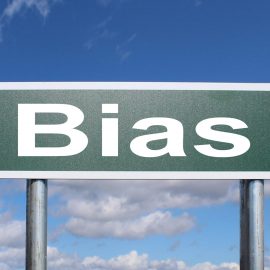

This article is an excerpt from the Shortform book guide to "Bittersweet" by Susan Cain. Shortform has the world's best summaries and analyses of books you should be reading.
Like this article? Sign up for a free trial here.
What are empathetic connections? What purpose do they serve? How do we form these connections?
According to Susan Cain, empathetic connections are the roots of our humanity, allowing us to feel the pain of others or extend compassion to anyone who needs it. From our evolutionary past to our modern day, empathy has played a critical role in strengthening our social ties.
Read on to learn about empathetic connections, including how and why we form these bonds.
The Roots of Empathetic Connections
In Bittersweet, author Susan Cain explains that the power of sadness as a means of empathetic connection goes back to our evolutionary roots, starting with the compassion required of mothers to care for defenseless infants. Because adult humans have a high level of intelligence and large brains as a result, we have to be born at an early stage of development—when our brains, and thus heads, are smaller—otherwise, we’d get stuck in the birth canal.
(Shortform note: Cain states that we evolved to care deeply for our infants because our level of intelligence and brain size require us to be small and vulnerable when we’re born, but recent studies suggest that the reverse may also be true. One evolutionary model purports that we evolved to be more intelligent because our infants are born underdeveloped and we need to be smart enough to protect them. One model doesn’t preclude the other—rather, they’re self-reinforcing. Our big brains mean we’re born helpless, and our helplessness as infants means that we need big-brained, intelligent parents to keep us safe. Therefore, early birth and large brains were both selected for during our evolution.)
This early birth means that human babies are especially vulnerable, and mothers must be hyper-attuned and empathetic to babies’ needs to take care of them effectively. This empathetic connection drives mothers to instinctively respond to signs of their children’s pain, including displays of sadness like crying.
(Shortform note: Crying—an important indicator of sadness and pain—is one of the primary things that drives mothers to care for their babies. Research shows that hearing a baby cry induces a rapid physiological response within a second that activates the parts of a mother’s brain associated with empathy, compassion, and alarm. Their response time to an infant’s cries is almost two times faster than their response to other sounds. Additionally, studies indicate that heightened levels of the hormone oxytocin (associated with love and social bonding) in mothers make them more sensitive to the sound of their children’s cries.)
Cain elaborates that over time, the instinct to care for others expanded beyond caring for our own children to caring for anyone who needs help. Because we evolved to respond to the cries of helpless infants, we learned to respond compassionately to anything that reminded us of infants. For example, the same instinct that allows us to form empathetic connections with our young compels us to take care of puppies or help someone who’s crying.
| The Evolutionary Roots of Our Compassionate Responses Evolutionary theory suggests that we evolved to feel compassion toward people beyond our own kin because it strengthened our social ties. Our helpful behavior benefited others in our social group and created opportunities for reciprocity that could later positively serve us. Our compassion extended especially to people we identified strongly with and were likely to engage with frequently. In our modern day, we’re still more likely to feel compassion and empathy for people whom we identify with in some way. Evolution has also played a role in which helpless, non-human organisms we extend compassion to: We don’t offer our empathy equally to all creatures. Studies show that the more distantly related we are to an organism on the evolutionary timeline, the less likely we are to experience empathy for it. This explains why we might feel horrible hurting a dog but not think twice about crushing a spider. |
How Sad Music Strengthens Empathy
The links between sadness, connection, and empathy also help answer the question of why so many people choose to listen to sad music. Cain states that sad songs help us to experience more empathetic connections toward other human beings than songs that evoke other emotions, creating a more profound listening experience. Sad songs enable us to inhabit the stories and emotions of others through music, tapping into the profound sense of connection that sadness creates. No other emotion in music, negative or positive, elicits the same feelings of transcendence and connection as sadness.
| The Healing Benefits of Sad Music In addition to helping us build empathetic connections and understand the pain of others, sad music can help us work through our own sorrow. When we experience sadness through music, we can move beyond pain into catharsis. In the context of music, the painful emotion isn’t a result of a true threat to our well-being or to the well-being of those we love like it might be in everyday life. We’re therefore able to process it with a layer of separation, and we can express and fully experience sadness while suffering less. Listening to sad music also tricks our brains into releasing the hormone prolactin, which helps to soften feelings of grief. When there isn’t a traumatic event to trigger it, the hormone just creates a pleasurable sense of calmness. Further, some psychologists state that listening to this type of music comforts us because it makes us feel less alone. When we’re feeling distressed, lonely, or introspective, the artist behind the sad music becomes an imaginary friend who offers support and understands how we feel because they share our experience. |

———End of Preview———
Like what you just read? Read the rest of the world's best book summary and analysis of Susan Cain's "Bittersweet" at Shortform.
Here's what you'll find in our full Bittersweet summary:
- Why you should embrace a bittersweet disposition in life
- How sadness has the power to foster creativity and empathy
- How to accept your own mortality and the impermanence of life






